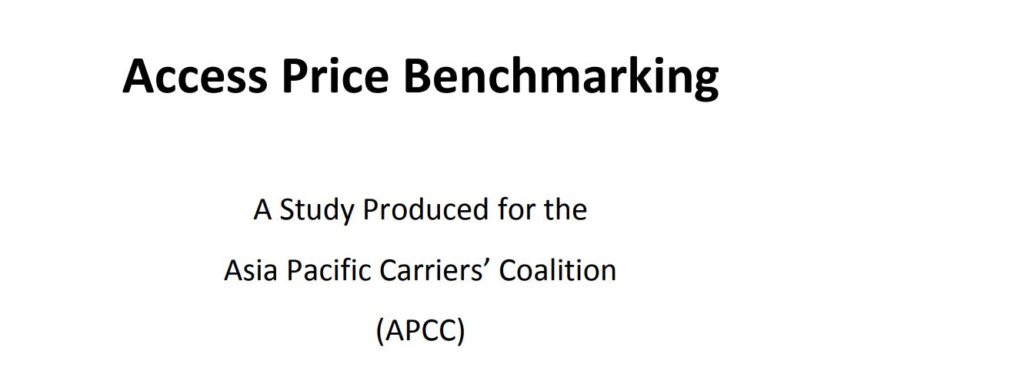

Access Price Benchmarking for APCC – a study produced for the Asia Pacific Carriers’ Coalition (APCC)
Executive Summary
1. This report follows similar APCC Access Benchmarking reports in 2003, 2006 and 2009. This report covers 14 economies, the same as in 2009 and two more than in the 2006 report. The economies are:
Australia
New Zealand
China
Philippines
Hong Kong
Singapore
Indonesia
South Korea
India
Taiwan
Japan
Thailand
Malaysia
Vietnam
2. All 14 economies reported data for leased lines and for Ethernet access and 11 economies for symmetrical DSL compared with six in 2009, and six for asymmetric DSL compared with eight in 2009. The data suggests a continuing spread of Ethernet access, especially for 100Mbps and 1Gbps and use of DSL.
3. As in previous reports, the prices reported are not list prices but the prices actually paid by the seven respondent international carriers. However, it is not possible to judge from the data how representative overall they are of any particular economy. Clearly the actual prices will be influenced by, among other factor, discounts for bulk-buying and for strategic marketing purposes.
4. The idea of real price comparisons was introduced into the 2009 report to take account of changes in dollar exchange rates and local rates of inflation. This report does likewise, but with the caveat that the international financial crisis and policy responses to it has played havoc with currency exchange rates and affected local rates of inflation in different ways. Therefore 2009-equivalent “real” prices are a less reliable measure than in the previous report. At the end of the day international carriers have to pay in very real current US dollars. A table of deflators is provided in Table 2.1.
5. The prices used for comparative purposes 2012-2012 are simple averages across all bitrates of leased circuits. This follows the practice of the previous two reports. Ideally a weighted average would be used reflecting the number of circuits in each category, but this data is mostly not available. Some inference may be drawn that the weighting towards lower-priced (and therefore lower bitrate) circuits has lessened since 2009. See Table 3.3.6a.
6. Key issues are:
- Leased lines remain the most widely used leased circuits. Overall prices have fallen, in some cases substantially such as South Korea by 41% and 22% in Indonesia; but Indonesia, Malaysia and Vietnam are by far the most expensive. Notable trends are the fall in overall prices in India and the continuing fall of prices in China. On the contrary, if the data is taken at face value, reported prices in Australia and New Zealand have increased substantially even more so in “real” prices. However for Australia, removing one set of reported high price data (i.e. treating it as an outlier) reduces the price increase to 2% and in the case of New Zealand for each bitrate there is only one carrier reporting data.
- For Ethernet access Vietnam seems to be an outlier, way beyond other economies in price. Also high is the Philippines which shows marked price increases for some bitrates over 2009. Malaysia is close behind but its prices are down by a large margin from 2009.
- Installation costs seem to have come down in proportion to annual rentals as the average across all economies is 8.8% in 2012 compared with 8.9% in 2009. However, see Appendix Table 8 for an alternative method of estimation.
- Although there is data for leasing DSL circuits from 11 economies, most of it comes from Australia and China, with Australia notably higher in rental charges and notably lower in installation charges than China. Installation charges exceed 10% of annual rental costs for symmetric DSL in five economies, in Malaysia they are reported as reaching 25%. For asymmetric DSL in Australia they are reported as close to 40%.
- Certain economies tend to benchmark each other. For ease of reference Table 1 summarizes pairs of economies. Hong Kong continues to stand out as the most price competitive economy. See Conclusion Tables 7 and 7a-7c.